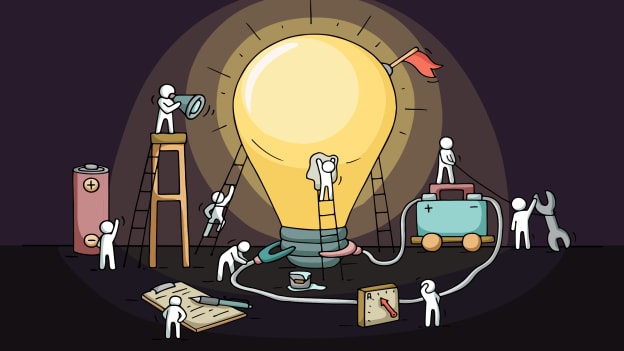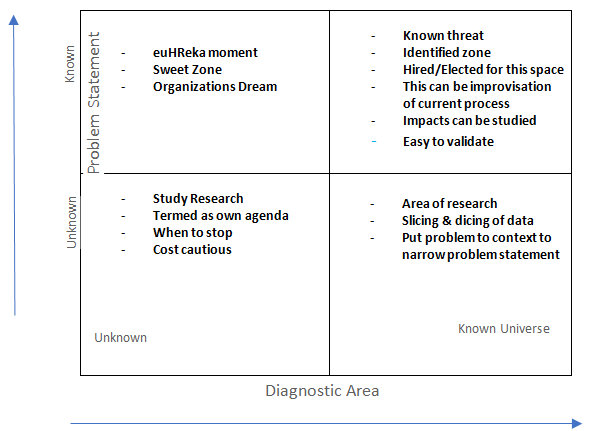Developing a culture of innovation in an organization

Competition is springing up real time as the gauntlets of creative dexterity. Though we have reached the eon of the nanoseconds, in the hurry of future, we have lost the pleasure of present. I call this whole phenomenon, the ‘Butterfly Effect’.
And in this universe of competition, innovation is making its space and is taking the shape of an abbreviated and very condensed version of creativity. Soon, there will be a thin line between innovation and learning. Therefore, it is important to understand the concept of innovation and imbibe it in the culture of the organization. What is innovation?
Art does not explain itself, at times it requires some advocates like us to explore, amplify and simplify certain concepts around. I name it as an act of transition from noun‐based knowledge frameworks of the past to verb‐based frameworks of the future.
Let us take a deep dive into trajectories of innovative business & understand reality from inside out.

Innovators - culture is bigger than you. Additive and subtractive innovation both are key to the business; this phenomenon of change management would be heart-wrenching for innovators and suck magnificently if it fails in execution. Artifact of such operations is rooted in the art of choosing the right knife: which knife would the change agent pick is his choice - chef knife or samurai, but one thing is sure that “the hardest change needs a softest touch”.
Allow me to microwave this journey & liberate through storytelling & some fictitious characters.
The Incubator
"We do not know until the shell breaks what kind of egg we have been sitting on”- T.S. Eliot.
Motor & sensory neurons fire continuously to disrupt their thought process; it’s a process, practice & deliberate attempt to shift from indigenous attitude i.e., antiquity style of working to new space of disruptive thinking. Battle here is between the conundrum: Why/what needs to change backed by right assumptions. Organizations keep their fiduciary interest intact; before innovating, ideators need to contemplate that this solution is answer to now or it’s a dressing up for future need.
This zone I will pronounce as precipice of chaos, conceiver is yet to taste success as s/he is on oxygen of appreciation. This vulnerability here is driven on curiosity and passion. Not to ignore the fact that in many cases even nudging structure reminds learners to change.
Introducing that “ideator”: I believe that innovators are not innate genius & they are strong sponsors of self. You would have seen such maverick(s) character in some organization, I hope by now you got it. S/He is the one who challenges the status quo, and sees things differently. S/he is a disruptive and radical innovator. S/He is the one who reads, observes and understands the business prospects, problems, processes and impact of it on business. They are keen to invert the business problem to opportunities.
Ideators are the ones who sniff the organization’s requirements in fractions, they know their role is not of an expert, but of collective wisdom. They double check the validity of thinking from theories, research execution viability & sense making for organization. Their perplexed knot is opened by their art of unfolding learnings that are rooted in the historical and theoretical ground of ‘Sense-Making’.
De-railer/dysfunctional drivers of ideators:
- Fail to derive right problem statement
- Understanding of change management if the organization has an innovation immune system
- Fear (Fear of failure, interpersonal conflict)
- Fail to understand cultural consequences & ecosystem
- Augmenting human intellect
- Restriction through rule book and policies
- Innovating far from being realistic
- Based on wrong assumptions
- Unrealistic project or accidental innovation
The Organization Kookiness
It is a repressive naked truth that innovation sustains business & business needs innovative inventories to lead the game of competition. Organizations by design are made to be stable, it uses its most safe and alert most strong defense “The Culture”. Culture triggers its pushback if they by nature have become immune to innovation, battling business within business. Organizational culture swallows all innovation tricks and grapples in its own reactions. Employees in such a culture are vaccinated against any innovation. Organizations who are not ready for innovation make the mistake of minimizing ‘Aaha’ moments. In such scenarios, personal risk is higher than general risk and is not distinguished.
De-railer/dysfunctional drivers for “Organization Kookiness”:
- Organization lacks the readiness to share knowledge and innovate
- Political gravity is pulling
- Resistance to change (this way is tested way)
- Lack of propensity & absorptive capacity
- Do not see customer value
- Lacks empowerment and creativity
Ideators slurp big time in such culture, environment throws back all innovation mercilessly, without allowing an opportunity to negotiate or to call as a successful failure. This disempowers the passion and deducts all cutting edge of culture. If the organization punishes and shames such act, ideators may get perplexed and exit.
That “InnoVUL” Leader - Vulnerability + Innovation: The culture of innovation is a leader’s & manager’s challenge. A manager’s role is very important so that the genius creative mind continues to do fertile intersections and add value to business. The InnoVUL leader should brace ideas & act as a psychological safety, challenging a toxic environment. They can help innovators keep away from collective hypocrisy or selective bias. It is must that they encourage surprise and serendipity and take an optimist tour of innovation.
It is the prime responsibility of the manager to allow honest dialogue, remove internal conflict and emerge as interactive coach.
Innovation Phase:
Trigger & Sustenance of idea: I call this stage as the toddler stage. This stage witnesses luminous record of one person’s struggle for a foothold and less number of people raise from failure. Compendium of reflections, manager’s contribution and understanding relation between self and other, self and world and most important understanding of self & use of self are the survival kit. They realize the possibility to dwell on passion, courage and will at this stage.
Death Valley – Acceptance/Rejection:
Manager’s appetite to allow an innovator to wrestle with the failure until his/her emotional discomfort takes a resilient form. Leaders and organizations have to remember that space of innovation is very close to the conceiver. It makes one’s heart ache when one sees his/her innovation not being accepted in system or put down due to internal dynamics, it is imperative for organizations to remember that a man has staked his brand and soul upon some end. The hopeless imperfection and futility of his own product which is immediately obvious to everyone but more to self. This is also an opportunity for innovator to have a rich inner life & an organizational eco system of contemplation.
This lethal mix of competencies “Vulnerability + Innovation” = “INNOVUL” (ideating, exhibiting Vulnerability, incubating and planning for execution) differentiate from rest. Vulnerability is registered not by exposure to risks, recognition requires thorough understanding and expansion of system thinking. Vulnerability assessments need to be coupled with (Human + Eco system). Look for that sweet zone for where you choose to be vulnerable.
Taste of Success/Failure: This stage I consider out of rewards of being out of balance & in new balance. By now he has different versions of lens; maybe he has found his own solace away from his regular comfort zone. Now he is able to contribute much in present with lot of sense to self and organization. He can take a telescopic 360-degree view to any event. I want the innovator breeds to stay in this stage. This space is like Ronald Heifetz’s Dance floor and Balcony.
Story boards of Innovator’s career evolves around self, manager & culture, S/ he needs to swim through these boundaries swiftly. The Mentifact, Sociofact & Artifact takes a high standard premise, here conscious preparation backed by unconscious incubation and demand’s respect of Alpha Waves of thought process.
Failure is not an option for innovators, is more an attitudinal pitch than proverb or a statement; the interplay between various organizational factors need to bounce organic culture for innovation. Leaders need to listen to the creative impulse & understand that “Creativity has vulnerability by default” & it breathes a sigh of relief as “Resilience” in the face of suffering.











